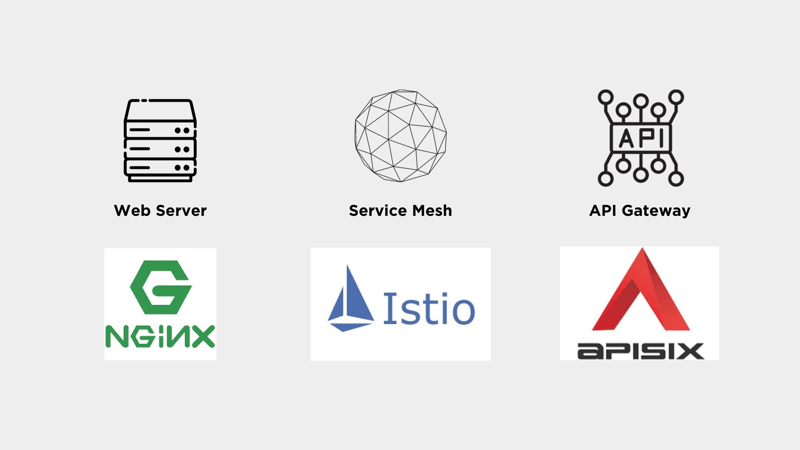In the realm of managing and safeguarding microservices architecture, several tools are at our disposal. Among them, three widely embraced choices are web server, service mesh, and API gateway. Each tool possesses unique functionalities and advantages.
In this article, we delve into the distinctions among these three tools to aid you in determining which best suits the needs of your organization.
Comparison Among Web Servers, Service Mesh, and API Gateway
Web Servers
A web server is a software application that handles HTTP requests and responses, primarily utilized for reverse proxy and load-balancing functions. A reverse proxy acts as an intermediary server between clients and servers, forwarding client requests to the appropriate servers. Load balancing distributes traffic across multiple servers to ensure no single server is overloaded.
Web servers are typically employed for handling static content like HTML (HyperText Markup Language), CSS (Cascading Style Sheets), and JavaScript files, and they can also manage dynamic content such as PHP (Hypertext Preprocessor), Python, and Ruby on Rails applications. They are easy to configure and can achieve horizontal scalability by adding more servers to the pool.
One of the most popular Web servers is NGINX, known for being a lightweight, high-performance server designed specifically for handling substantial traffic. Many high-traffic websites like Netflix, Airbnb, and GitHub rely on NGINX.
Service Mesh
A service mesh is a specialized infrastructure layer for managing inter-service communication within a microservices architecture. It ensures the security and observability of legacy services within a company, typically comprised of a set of proxies deployed alongside each service instance.
Service mesh offers various advantages, including service discovery, load balancing, traffic routing, and enhanced security. Additionally, it provides observability features like tracing, logging, and metrics. Service mesh is designed to be transparent to application code, relieving developers from the burden of implementing these functionalities.
One popular service mesh is Istio, an open-source service mesh providing a unified control plane for managing inter-service communication. It boasts features such as traffic management, security, and observability.
API Gateway
An API gateway serves as the entry point for a microservices architecture, primarily focused on API management. It offers numerous advantages, including authentication, authorization, rate limiting, and caching. Moreover, it provides clients with a unified interface to access various microservices.
API gateways are commonly used for managing external APIs like REST and GraphQL APIs, as well as internal APIs such as gRPC and Kafka APIs. They are designed to be highly customizable, allowing developers to implement their business logic and add new features as needed.
One popular API gateway is Apache APISIX, an open-source API gateway providing features like service discovery, load balancing, authentication, and rate limiting. It also incorporates a plugin system enabling developers to add new functionalities.
Choosing the Right Tool
Now that we've delved deeper into the differences between web servers, service mesh, and API gateways, how do you make the right choice? It depends on your specific use case and requirements.
- If you're seeking a simple solution for reverse proxy and load balancing, a Web server like NGINX may be the optimal choice.
- If you require a dedicated infrastructure layer for managing inter-service communication, a service mesh like Istio might be the best fit.
- If you're looking for an entry point for microservices architecture and API management, an API gateway like Apache APISIX could be the ideal choice.
It's important to note that these tools are not mutually exclusive. You can simultaneously use web servers, service mesh, and API gateways to achieve the desired results. For example, using NGINX as a reverse proxy and load balancer, Istio for internal communication as a service mesh, and APISIX as the API gateway for external APIs.
Conclusion
In conclusion, web servers, service mesh, and API gateways are indispensable tools in building and safeguarding microservices architecture. Each tool brings unique features and advantages to the table. The key lies in choosing the tool that best aligns with your specific use case and requirements. Additionally, in the planning of a microservices architecture, security, and observability stand as indispensable elements for constructing a robust foundation.



Top comments (0)